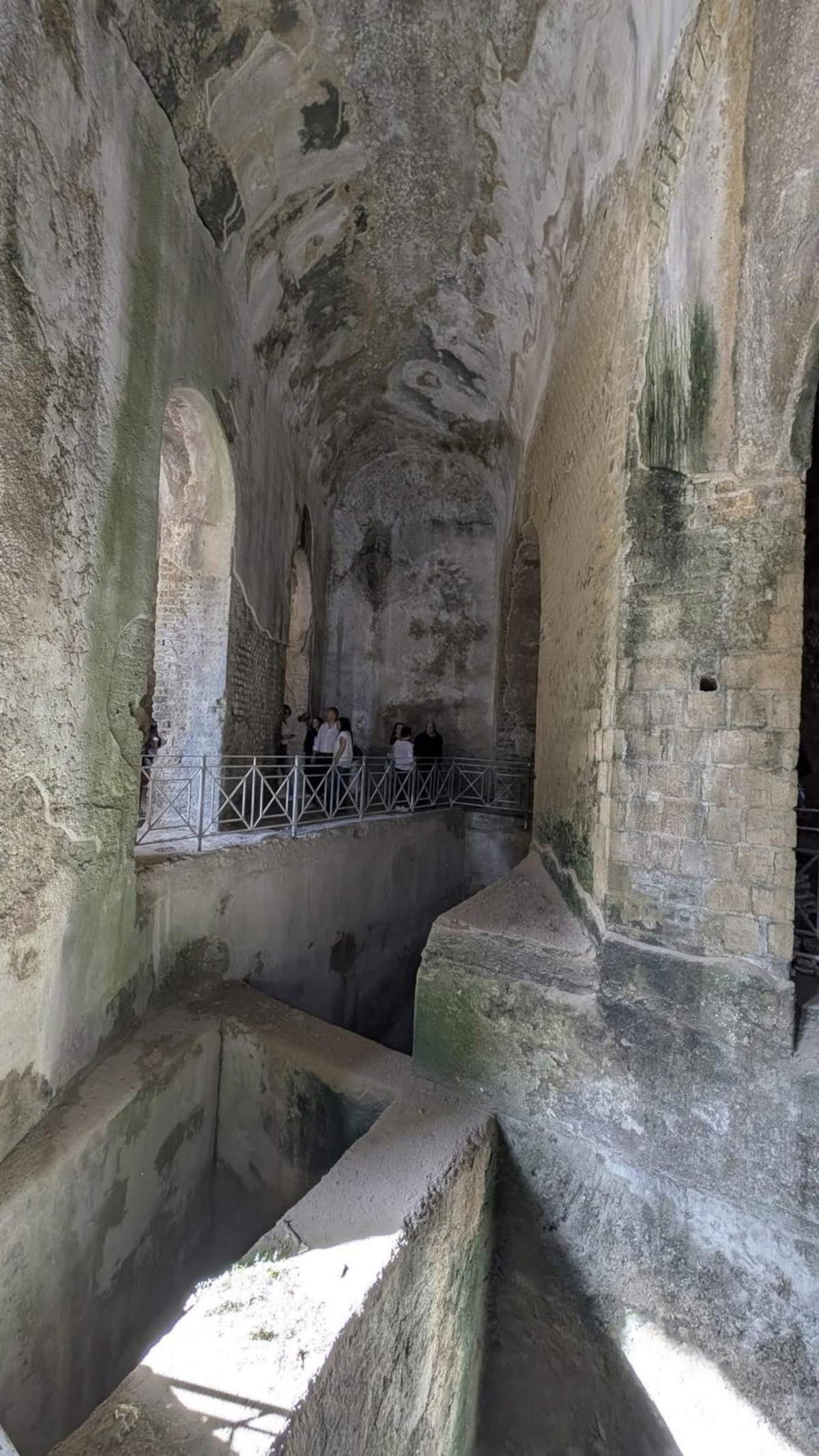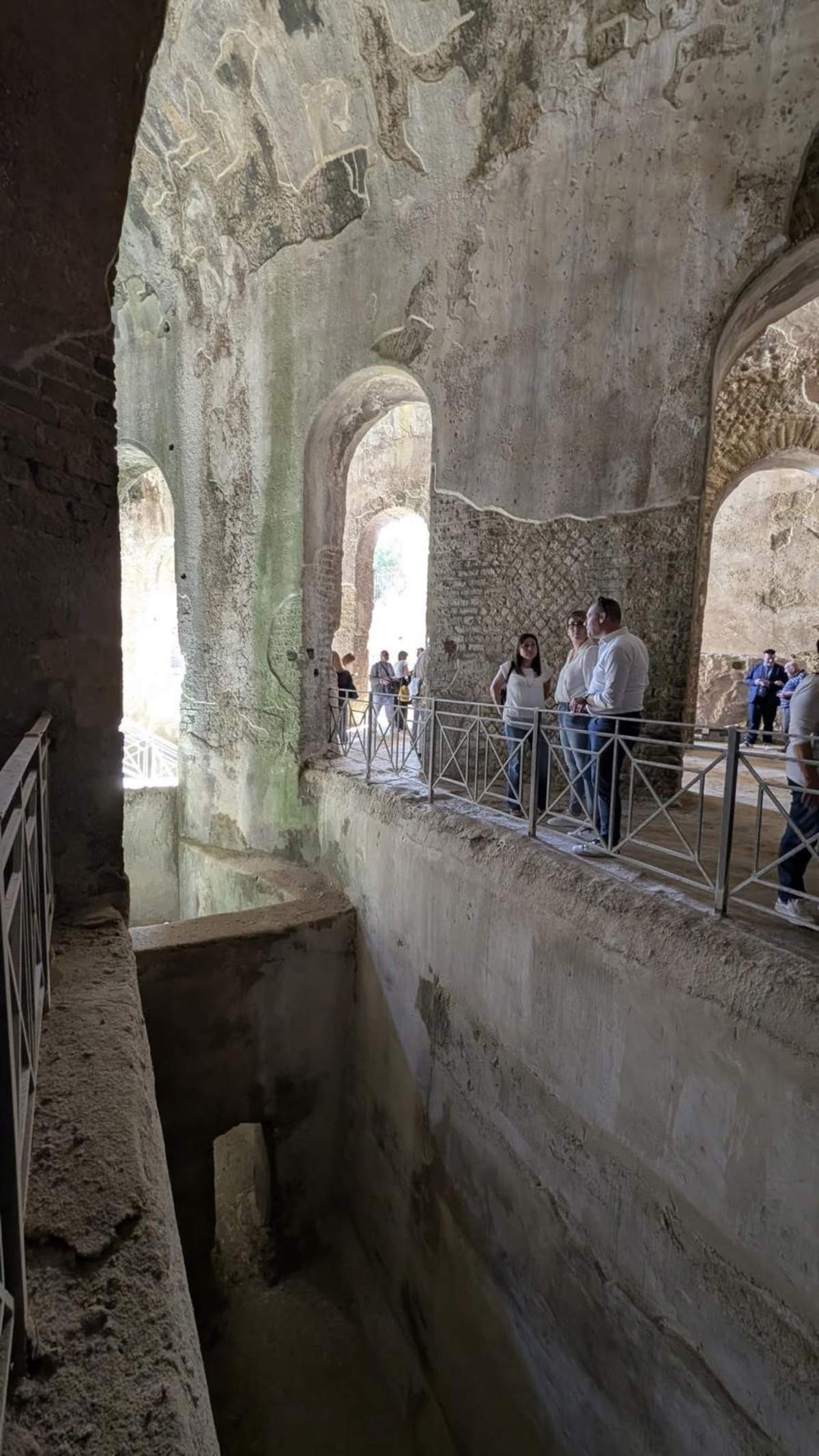As of May 31, 2025, three emblematic sites of the Campi Flegrei ’s archaeological heritage will return permanently accessible to the public: the monumental Piscina Mirabilis, the ancient and articulated complex of the Hundred Chambers, and the historic prisons of the Castle of Baia. The reopening is made possible by the launch of the project Together. Phlegraean Archaeology Unites, a cultural and social enhancement initiative that is part of a Special Public-Private Partnership (PSPP), a legal instrument that allows for shared management between institutions and third-sector entities. The project was created with the intention of reconciling the protection and enhancement of archaeological heritage with the promotion of active participation of local communities. Together. Phlegraean archaeology uniscesiin fact proposes as an experimental model to return places of great historical and archaeological importance to the public, through an integrated approach that combines cultural, social and tourism purposes. The strategy focuses on an idea of conscious and inclusive fruition, capable of involving citizens, visitors, schools and local associations.
“The Park relaunches innovation and opens up its boundaries even more,” says Phlegraean Fields Archaeological Park Director Fabio Pagano, “The Phlegraean Fields Archaeological Park was the first institution of the Ministry of Culture to experiment with a new management model based on the special public-private partnership. With the launch of this new phase, an unprecedented scenario of collaboration opens up that invests the enhancement of places of great charm and evocation and that will ensure the presence of new services for the improvement of the Park’s enjoyment. An alliance between institutions, economic operators, and associations in the area to boost the offer towards a development increasingly based on cultural tourism.”
“This project demonstrates how strategic is the model of collaboration between public and private for the enhancement of cultural heritage,” comments Letizia Casuccio, General Manager of CoopCulture. “The Special Public-Private Partnership allows us to deploy shared skills, energies and visions, creating a sustainable and participatory system. Continuously reopening extraordinary sites such as the Piscina Mirabilis, the Hundred Chambers and the Prisons of the Castle of Baia means returning them to the community and offering new opportunities for cultural enjoyment and territorial development. It is a challenge that we must face with responsibility and enthusiasm, aware of the identity and social value of these places.”
The distinctive element of the initiative is represented by the management formula adopted. The Archaeological Park of the Phlegraean Fields has activated a Special Public-Private Partnership with CoopCulture, a cooperative among the leading Italian entities in the management of cultural heritage. Together with CoopCulture, other local entities collaborate in an extended governance system that aims to ensure the continuity of the openings, the quality of the services offered and the sustainability of the cultural activities promoted. The partnership makes it possible to overcome the difficulties often associated with ordinary public management through greater organizational flexibility and shared operational responsibilities. The intervention takes the form of the scheduled reopening of the three sites. The Piscina Mirabilis, considered one of the most impressive Roman cisterns in existence, will be accessible to the public with accompanied tours every Wednesday, Saturday and Sunday starting at 10 a.m. The monument, carved into the tuff rock and characterized by monumental arches that earned it the nickname “cathedral of water,” represented the water terminal of the Augustan Aqueduct network, serving the Roman military fleet at Cape Misenum. Also on the same weekly opening schedule will be the Cento Camerelle, a two-level hypogeum complex consisting of cisterns, tunnels and vaulted rooms from Roman times, whose name derives from the multiplicity of the interior spaces. The original function of the structure is still under study, but it is believed to have been related to water supply activities and perhaps to an ancient suburban villa. Both sites provide for escorted access, to ensure both the safety of visitors and the preservation of the monuments. The cultural offerings will be enriched by educational activities for schools, thematic itineraries for families and enthusiasts, as well as innovative fruition tools such as digital itineraries, designed to enhance the visitor experience and make it accessible to a wide and diverse audience. The prisons of Baia Castle, carved into the rock and overlooking the sea, are also among the places covered by the project. An integral part of the Aragonese fortress that dominates the Gulf of Pozzuoli, the underground rooms retain traces of their ancient military and prison function. The site will be accessible from Tuesday to Sunday, exclusively with guided tours by reservation. In addition, every first Sunday of the month, tours will be activated with fixed departures at 10:30 a.m., 11:45 a.m., 12:45 p.m. and 1:30 p.m. The overall objective of the initiative is twofold: on the one hand, to promote the knowledge and appreciation of an archaeological heritage that is peculiar but little known to the general public; on the other hand, to establish a more direct relationship between citizens and places of memory, stimulating widespread awareness and a new collective responsibility toward the preservation of cultural heritage.

The project fits into a territorial context characterized by a high concentration of archaeological, naturalistic and landscape emergencies, but also by social and economic fragilities. In this framework, the public-private partnership is configured as a tool for cultural regeneration and social cohesion, capable of activating virtuous networks between public, private and citizenship. Indeed, the strategy adopted aims to overcome the logic of the isolated event, favoring the construction of an integrated, stable and inclusive cultural system. The regular reopening of the three sites represents a concrete and visible result of this approach. The opportunity to visit them on a weekly basis, to participate in educational initiatives and to take advantage of innovative tools, responds to a demand for culture that is both local and international. The project also stands in continuity with national and regional policies for the enhancement of diffuse heritage, promoting forms of sustainable tourism capable of generating economic and employment spin-offs in the medium to long term.
 |
| Three Phlegrean jewels reopen: Piscina Mirabilis, Cento Camerelle and Prigioni del Castello di Baia |
Warning: the translation into English of the original Italian article was created using automatic tools. We undertake to review all articles, but we do not guarantee the total absence of inaccuracies in the translation due to the program. You can find the original by clicking on the ITA button. If you find any mistake,please contact us.